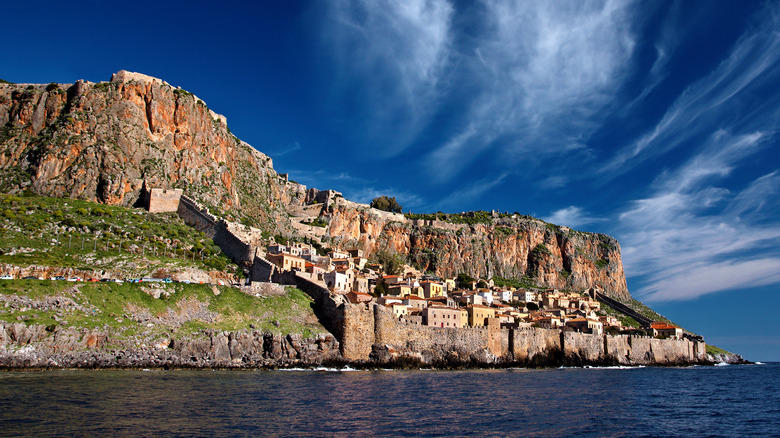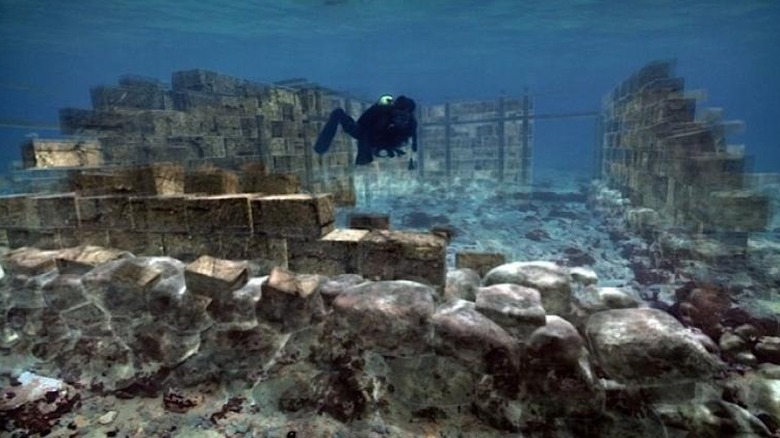The Truth About Greece's Ancient Underwater City
We have all heard stories of the mythical island of Atlantis. Some of us know the history of actual places like Dwarka over in India, the pyramid of Yonaguni, Japan, or even the pirate capital of Port Royal, Jamaica. The thing that all of these places (whether real or imagined) have in common is the fact that they all sit underwater. As as it turns out, there are actually quite a few ancient cities or establishments that now sit submerged in some body of water. One such place is the Greek city of Pavlopetri.
For thousands of years, off the coast of the island of Laconia, the city of Palvopetri lay submerged and dormant. But according to Greek City Times, it was rediscovered by Nicholas Flemming in 1967 and mapped by another group of archeologists in 1968. As the site was explored, more and more fascinating things came to light. One unique feature of Pavlopetri is how well preserved it is. Per Live Science, this settlement is essentially perfectly preserved, with streets, tombs, and even buildings still intact. Indeed, at least 15 buildings have been identified since the city was first discovered.
The world's oldest underwater city
As an archeological team from the University of Cambridge continued to excavate the site, one of the obvious questions that arose was how old it is. According to World Monuments Fund, archeologists have dated Pavlopetri back to the third millennium B.C., and it remained occupied until around 1100 B.C. Based on these dates, Pavlopetri is the oldest submerged city in the world. In addition to the nearly flawless preservation of the city's structures, other objects like tableware and Minoan jars were also found. The discovery of such objects gives us a chance to look back and really see how these ancient people lived.
Because of its historical significance, in 2016, Pavlopetri was claimed as a site under the World's Monument Watch, which is supported by the World Monuments Fund, according to Make Heritage Fun. Looters target Pavlopetri for its artifacts, and it's reportedly in danger of being destroyed and/or damaged from pollution caused by large ships anchoring in nearby bays. Efforts are now being made to focus on the education and protection of this spectacular archeological find.

